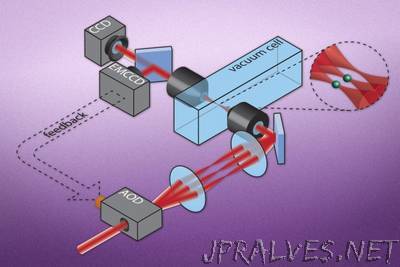
“Atoms, photons, and other quantum particles are often capricious and finicky by nature; very rarely at a standstill, they often collide with others of their kind. But if such particles can be individually corralled and controlled in large numbers, they may be harnessed as quantum bits, or qubits - tiny units of information whose state or orientation can be used to carry out calculations at rates significantly faster than today’s semiconductor-based computer chips. In recent years, scientists have come up with ways to isolate and manipulate individual quantum particles. But such techniques have been difficult to scale up, and the lack of a reliable way to manipulate large numbers of atoms remains a significant roadblock toward quantum computing.”
